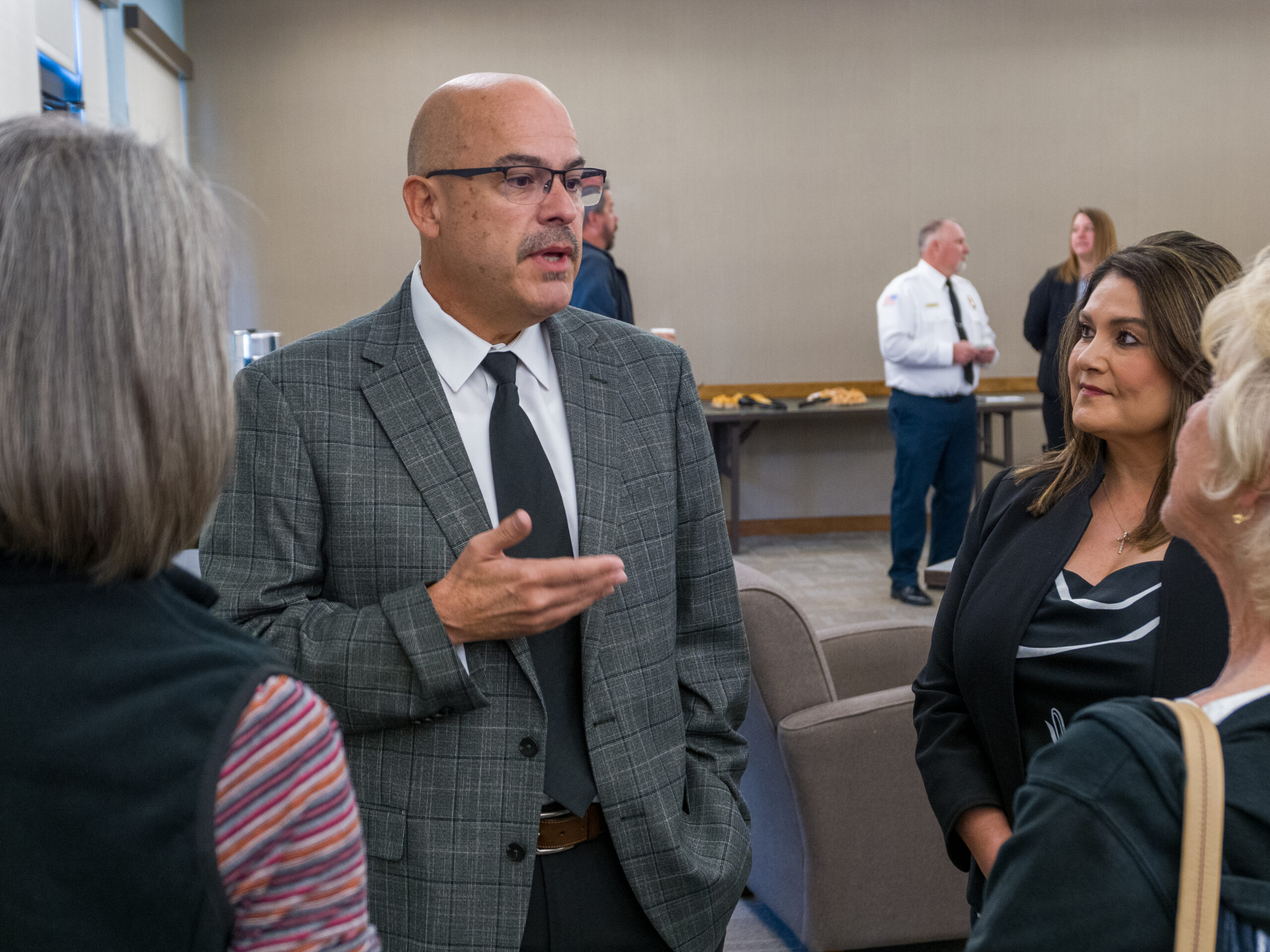Since 2004, Cottonwood collected more than $2.5 million from water users who paid into four city enterprise funds not directly related to the actual cost of water service, according to city records.
In two letters to City Manager Doug Bartosh, Yavapai County District 3 Supervisor Chip Davis questioned the purpose of the funds and the propriety of charging water users who live outside the city and have no vote on Cottonwood City Council, the only government body with power to determine what users pay.
“It’s taxation without representation,” Davis said.
Bartosh said all of the charges were necessary and proper to protect the city’s water supply now and in the future.
“This is the first time anyone has ever expressed concern about this issue since we bought the water company six years ago,” Bartosh said.
In a Feb. 8 letter to Arizona Sen. Steve Pierce [R-District 1] and Arizona Reps. Karen Fann [R-District 1] and Andy Tobin [R-District 1], Davis called on the legislators to pass a law to “resolve potential conflicts and assure all citizens have a voice.”
Davis said the issue arose after several of his constituents questioned him about the fees they were paying.
The following fees appear on Cottonwood water bills each month in addition to the charge for actual water usage: Water Resource Development [$4.00]; Yavapai County Water Advisory [$0.32]; Gila River Adjudication [$0.41]; and Water Conservation [$0.25].
Two of the charges are identified by titles that do not accurately describe the purpose of the fund into which they are paid, according to Davis.
The Yavapai County Water Advisory fund, for example, pays dues and fees related to all of the city’s memberships on water-related committees and commissions, not just the Water Advisory Committee, City Finance Director Rudy Rodriguez said.
Furthermore, the Water Advisory Committee is not a county agency, Davis said. In a letter to Bartosh dated Jan. 11, Davis urged the city to stop using Yavapai County in relation to the charge.
“Please consider using a new heading,” Davis wrote.
The Yavapai County Water Advisory fund collected $29,000 more in 2010 than the city actually paid in dues, Davis wrote.
The fund currently holds more than $113,880 in reserve for future dues and memberships, Rodriguez said.
Both the city and the county pay $10,000 each to maintain memberships on the Water Advisory Committee. The county pays on behalf of residents of the unincorporated areas, according to Davis.
Because both city residents and those who live in unincorporated areas pay the same 32 cent Yavapai County Water Advisory charge on their monthly water bill, “customers in the unincorporated areas are apparently paying twice for representation on the WAC,” Davis wrote to Bartosh on Nov. 16.
Another confusing charge is Gila River Adjudication, a “misnomer,” Rodriguez said.
The city is not currently involved in any litigation related to the Gila River. It is not involved in any water-related litigation at all. Nevertheless, the fund has accumulated more than $155,770 to date. Small amounts have been paid to a lawyer representing the city in relation to negotiations and for studies about the city’s water rights, he said.
If the city was sued over water rights, it would probably make a claim on its liability insurance through the state. The cost of attorneys in that event would be paid by the insurance carrier, Rodriguez said.
“We’re proactively trying to avoid litigation by trying to acquire water and doing everything we can to protect what we have today,” Bartosh said.
The largest of the city’s enterprise funds related to water, Water Resource Development, accumulated nearly $2.2 million since 2004. The purpose of the fund is to buy water rights to ensure Cottonwood’s future access to adequate water supplies, Bartosh said.
In June, for example, the city paid to acquire a senior right to use excess water pumped by Spring Creek Ranch, a residential subdivision north of Cottonwood located outside city limits off State Route 89A.
Even though the city is one of the few in the state certified as having a 100-year water supply, Bartosh said the city’s claim to those rights is not finally determined and could change as a result of litigation.
“Having that designation and actually having the water is actually two things,” he said. “We don’t want to see the Verde River run dry. We want to make sure we have adequate rights in the future.”
Water Conservation, one of the smallest enterprise funds, accumulated more than $134,830 since 2004, Rodriguez reported. The fund is intended to be used when the city develops a water conservation plan and could be paid to install low-water flush toilets at all city facilities, he said.
Currently, the city has not developed a water conservation plan and there are no immediate plans to buy low-water flush toilets, he said.
“We’re trying to make sure the city of Cottonwood is around well after our lifetimes. For our kids, we want to make sure there’s enough water. We’re just protecting our water resources,” Rodriguez said.
None of the money in the four enterprise funds can be spent on anything other than water-related projects. In addition, the reserves help the city meet the requirements of bond holders who loaned money to the city for the purchase of the water company, Rodriguez said.



